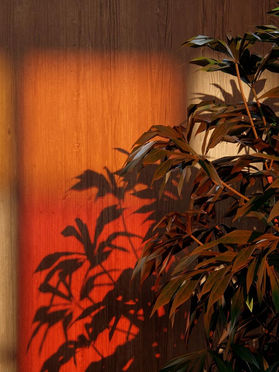Ray-traced glass: how to
replicate reality
The power of glass
Glass plays an irreplaceable role in architectural design. It lets light pass through it, creating lifelike lighting conditions and shadows. It creates reflections and refractions, adding depth to spaces and realism to surfaces. And it adds aesthetic appeal like nothing else, effortlessly achieving a sleek, modern look.
Accurately replicating all this in your renders might sound like a challenge, but in Lumion 2024, it can be achieved with ease. In this guide, we’ll take you through everything you can do with glass – from making it stand out with ray tracing to creating ambiance with raindrops.
Not using the latest version of Lumion yet? No worries, you can still try out everything in this guide with a free Lumion Pro trial.
Glass illuminated
Recreating the precise behavior of light is crucial for capturing the intended atmosphere and spatial dynamics of a design. Ray tracing makes this possible by simulating exactly how it interacts with glass objects and surfaces in the real world.
In Lumion 2024, the ray tracing effect has been optimized and expanded even further. It now not only works with standard glass surfaces, but can be activated to make more intricate glass objects come alive in high definition as well. Keep reading to find out how it works.
But for now, let’s start by enabling the ray tracing effect for your scene. This is great for your flat glass surfaces like windows and walls. Simply head to photo, movie, or panorama mode, then switch it on in +FX.

Crafting authentic interior glass
Let’s dive into the material settings that will make any expanse of glass in your design truly shine.
There are multiple glass materials in Lumion that are ideal for larger, flat surfaces. Find them in Materials, then select Glass, and choose Interior Glass. For the sake of this guide, let’s go with the first one.
By double-clicking your chosen material, you’ll be able to open its settings. To heighten the realism of your glass, increase the Relief slider and Map scale. This adds a slight waviness that’s typical of real-life windows.
The Distortion property can also be increased here to warp how reflected and refracted objects appear in the glass, just as they would in reality. The Emulated thickness slider helps define the thickness of your glass material, which affects how light passes through it.
And to control the amount of light absorbed in your glass surface, try tweaking the Absorption slider.
Select a shade
You’ll also see a Color property in the glass material settings. Choose your favorite shade and add a unique, customized touch to the glass objects in your scene.
Create instant coziness
Want to conjure a calm, cozy interior environment? Rain streaks on glass offer a surefire method.
In your material’s settings, you’ll see a Force rain streaks slider. Increase this, then add the Precipitation effect in movie mode.

Under the effect, there’s a Rain streaks slider – adjust this to incorporate your desired amount of rain. And there you have it – the perfect rainy day and an undeniably evocative animation.

Highlight intricate details
Fully ray-traced glass is an advanced material new to Lumion 2024, specifically designed for complex glass shapes and objects. When activated, it provides detailed glass items with additional refraction and reflection properties, resulting in a more authentic look than regular ray-traced glass surfaces.
To turn it on, start by choosing a glass object like a wine glass or mason jar and assign it a glass material.
Next, go to the Ray tracing effect in +FX, click Show more, then flick on the Fully ray-traced glass toggle.
For the very best results, make it double-sided and set the emulated thickness to zero.
Paint with light and color
Once you’ve mastered the art of realistic glass, why not experiment with colored shadows? Changing the color of your glass materials allows ambient tinted shadows to be cast into the room.
Simply set the glass to your preferred color and watch the entire room be painted the same shade. Give it a try and discover just how easy it is to create evocative interior scenes.
Looking for more material choices?
With Lumion’s physically-based material workflow, you have full creative freedom over how you create and customize your textures. Choose from 1,500+ high-quality materials in the internal library, import your own, and personalize them using the material editor.
Explore all this and more in the latest version of Lumion. If you're using an earlier version of the software, upgrade to Lumion 2024 today and get instant access to all the latest features, content, and updates as soon as they’re released.
Explore latest releases










